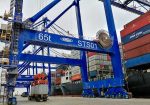By Tako Koning
Various oil industry analysts including myself were shocked to hear the news on January 9th 2025 that Shell had written down its holdings in deepwater Namibia by $400 million. This has led to many analysts asking, “Whatever is going on in deepwater Namibia”?
Early Excitement
Only three years ago Shell electrified the world’s oil industry with the announcement of the discovery of light oil and associated natural gas in the Graff-1X exploration well in the deepwater Orange Basin. The reservoirs were described as Upper Cretaceous marine sandstones. Almost immediately thereafter TOTALEnergies announced that the deepwater Venus-1X exploration well had discovered oil and associated gas in high-quality Lower Cretaceous sandstones. In 2023, Galp Energia added excitement with their announcement of the Mopane oil discovery. Following the Graff discovery, Shell announced oil and gas discoveries in the La Rona, Lesedi, Jonker and Enigma exploration wells. In total, five discoveries were made by Shell. Within a span of only three years, the Orange Basin had risen to become one of the world’s top-rated areas for oil exploration.
This leads to the critical question: what new information is currently available which significantly downgrades the deepwater Namibia? Or is there still room for optimism? I had to ask myself: why does Shell’s acreage in the Orange Basin have technical problems whereas these have not been reported by TOTALEnergies nor by Galp Energia?
Within the oil industry’s geological community, there has been a lot of discussions on the internet about why Shell has downgraded its Orange Basin holdings. The overall consensus as summarized in the UK-based publication GEOExPro (October 2024) is that chlorite cementation probably has had a detrimental effect on the reservoir properties. Such impurities can lead to lower oil recovery rates. However, what is most puzzling is that neither Galp Energia nor TOTALEnergies have reported similar problems in their discoveries.
Mopane Oil & Gas Field
In mid-2024, Galp Energia completed the drilling of two wells in Petroleum Exploration License (PEL) 83 where it has a high 80% working interest. State-owned Namcor has a 10% working interest as well as Namibia-based Custos Energy with a 10% working interest. Custos Energy is a Namibian indigenous company. The initial discovery well, Mopane-1X was followed by Mopane-2X, an exploration well located eight kilometres (8km) westwards. Namcor stated that Mopane-1X had discovered “a substantial column of light oil in high quality reservoir-bearing Cenomanian and Turonian age sands”. Galp declared that with Monpane-2X, “significant light oil columns were found in high-quality reservoir sands”. In April 2024, Galp announced that well tests in the Mopane-1X reached 14,000 barrels of oil per day equivalent which was the maximum allowable limit for testing. The oil was light oil with low viscosity, minimal CO2, and no H2S.
In November 2024, Galp drilled and completed appraisal well Mopane-1A. Galp announced “light oil and gas-condensate reservoir-bearing sands with good porosities”. In January 2025, Galp completed appraisal well Mopane-2A and announced that the reservoir consisted of “good quality” sands with “good” porosities and permeabilities, high pressures and low fluid viscosities, minimum concentrations of carbon dioxide and no hydrogen sulfide. Galp also stated that “in line with the previous Mopane wells, no water contacts were found”. Industry watchers like myself wonder why Galp described the sands in Mopane-1A and Mopane-2A as only “good quality” whereas in the first two wells the reservoirs were described as “high quality”. Possibly the reservoir quality decreases in a westward and southern direction. In the meantime, Galp is now drilling Mopane-3X located about 15 km southeast of the Mopane field.
Shell’s announcement of their write down of their Namibia holdings could be viewed by the international investors as being extremely negative for deepwater Namibia. However, Galp Energia’s stock market price has held up very well, which implies that the worldwide international investment community is not overly concerned about Shell’s pessimistic assessment (Figure 1). Galp’s current stock market capitalization stands at a healthy Euro 11.8Billion ($12.3Billion). A similar stock market performance has been achieved by Toronto, Canada-based Sintana Energy which has a 4.9% interest in Mopane through its indirect interest in Custos Energy. Sintana’s current stock market capitalization is Cdn$295Million ($205Million).
Currently, Rhino Resources is operator of PEL 85 and is drilling the Sagitarius-1X exploration well. Rhino’s partners include Azule Energy which is the BP-Eni 50:50 joint venture, Namcor and the Namibian company Korres Investments. Rhino Resources is a privately owned South African company and holds 42.5% interest in PEL 85 along with Azul Energy holding 42.5%, Namcor 10% and Korres 5%. At an oil industry conference last year in Cape Town, Maggy Shino, Namibia’s Petroleum Commissioner described Sagitarius as follows: “This is one of the most amazing prospects I have ever seen in Namibia. It does not get better than this”. If Mopane-3X and Sagitarius-1X are successes, this would bode well for the Orange Basin. However, if either are dry holes, this would blow a cold wind over deepwater Namibia.
Chevron Dry Hole
A cold wind did blow recently over deepwater Namibia with Chevron announcing on January 15, 2025 that their first exploration well in Namibia, Kapana-1X drilled on PEL 90 was a dry hole. This well was drilled 60 km west from Mopane. PEL 90 covers 5,433 sq km in water depths of 2,300 – 3,300 metres. Chevron is operator of PEL 90 with a 90% working interest and partnered with Namibia-based Trago Energy which holds the remaining 10%. Sintana Energy has a 5% carried indirect interest in PEL 90 in the initial exploration phase. Sintana acquired its interest through its acquisition in March 2022 of 49% of Trago Energy which is a wholly owned subsidiary of Custos Energy.
TOTALEnergies Moving Full Speed Ahead
Two weeks ago, rumours began to surface that TOTALEnergies may have a major discovery in the Tamboti-1X exploration well. This well appears to be targeting the northeastern extension of the fan complex discovered by Mangetti-1X. TOTALEnergies mentioned that the structure targeted by this well could hold one billion barrels of oil resource. A press release has not yet been issued. Last October, TOTALEnergies CEO Patrick Pouyanne told analysts that the first FPSO on Venus will be designed to produce 160,000 barrels of oil per day and 500 million cubic feet of gas daily. The development is expected to be sanctioned in mid-2025 and on production by 2029. Multiple FPSOs will be needed for the full development of Venus. A major challenge for the development of Venus is the need to reinject the gas at a reasonable cost. Excessive costs could conceivably make the project non-economic. This will require leading edge technology since never before has reinjection of gas been carried out in 3,000 m of water.
Estimates of Oil & Gas Resources
Galp estimated that the Mopane discovery holds over 10Bllion barrels of oil in-place. By using a recovery factor of 25%, my “back of the envelope” estimate of the recoverable resources for Mopane are 2.5Billion barrels of oil. According to Namcor, Venus holds 2Billion barrels of recoverable oil out of an in-place resource of 5.0Billion barrels. This implies a recovery factor of 40%. Namcor has also indicated that they estimate almost 9.0Trillion cubic feet of associated gas has been found by TOTALEnergies and Shell.
All of the oil discoveries throughout the Orange Basin are gas-rich so there are also concerns about what to do with the gas. Flaring is not an option. Due to the deep water which ranges from as deep as 3,000 metres for TOTALEnergies to 2,000 metres for Shell and 1,600 metres for Galp, a gas solution will be complicated and expensive.
None of the discoveries in the Orange Basin have yet been declared commercially viable. None yet can be classified as reserves since reserves are volumes of oil which have been determined to be economically producible by the operator, independent consultants, and the Government of Namibia.
Where Is This All Going?
Has Shell unfairly tarnished the heretofore outstanding reputation of the deepwater Orange Basin? Perhaps Shell’s corporate threshold for commercial success is much higher than that of Galp and TOTALEnergies? However, I believe there are other companies such as Petrobras, TOTALEnergies or Chevron who could be very willing to partner with Namcor and develop Shell’s discoveries if Shell walks away. You can also be sure that ExxonMobil remains interested in opportunities in the Orange Basin.
One day after Shell announced the write down, Namibia’s Ministry of Energy and Mines issued a strongly worded two-page rebuttal which included the following: “While the Shell write down is unfortunate, we believe that we have barely begun to scratch the surface of our country’s offshore resources. We remain confident that ongoing exploration efforts will reveal commercial opportunities and look forward to delivering first oil production in the near future”.
For the past fifty years I have been involved hands-on in worldwide oil and gas exploration. I have also followed the oil industry as a consultant and analyst. I fully agree with the Namibians. It is still early days in Namibia. This is classic frontier oil exploration in a minimally evaluated super-large sedimentary basin. This story is not yet finished. Stay tuned.
Tako Koning is Holland-born, Canada-raised and resides in Calgary. He was involved with the evaluation of Namibia’s Kudu gas field from 1995 – 1997 when he was portfolio manager with Texaco in Luanda, Angola. At that time, Shell was operator of Kudu and Texaco had a 15% working interest in the field. Since that time, he has had an abiding interest in Namibia’s oil industry. He closely follows the latest news coming out of Namibia. He has travelled several times in Namibia for business and also as a tourist. His view is that Namibia is magnificent with its deserts, spectacular coastline, wildlife, and numerous national parks.










